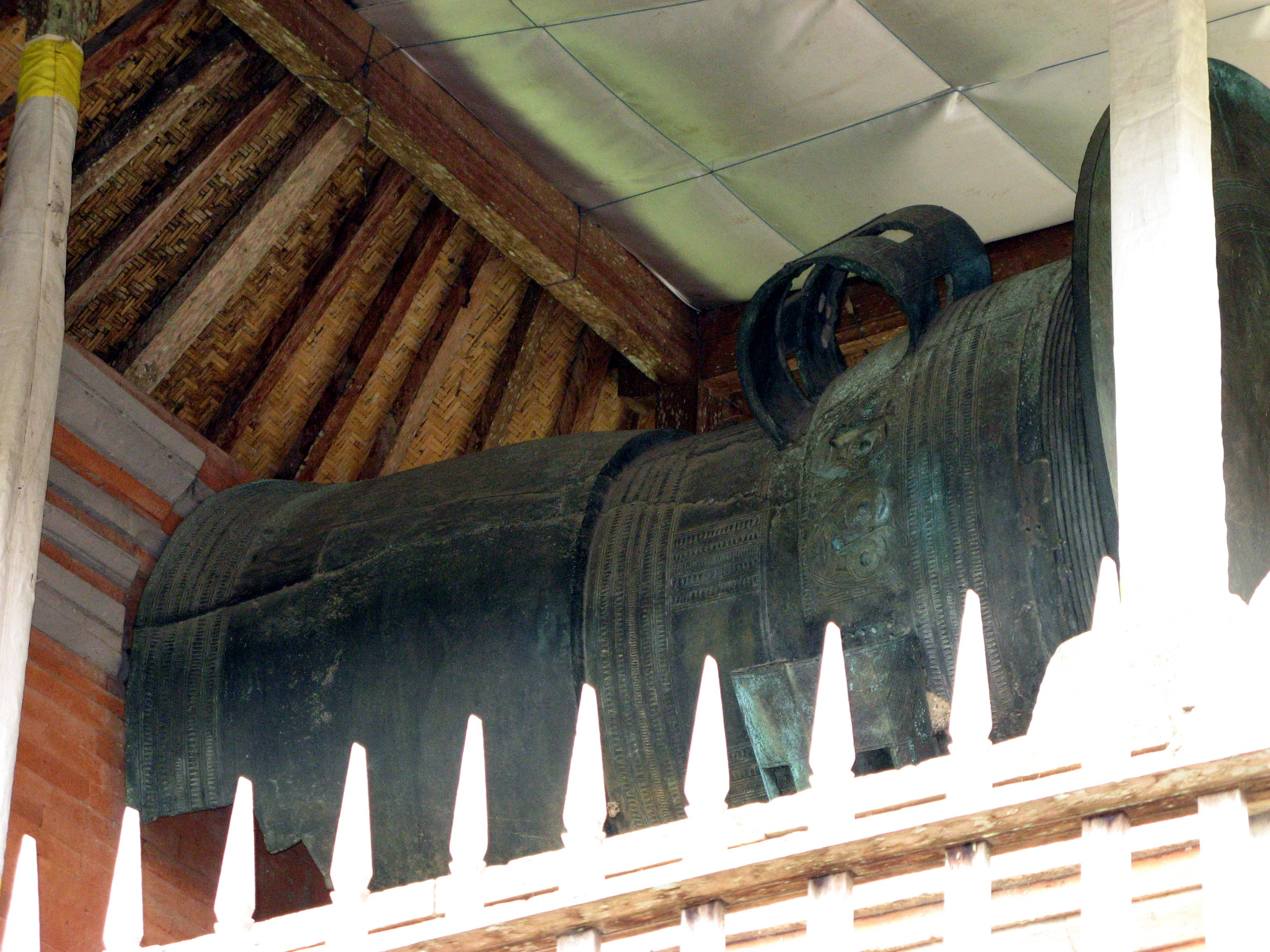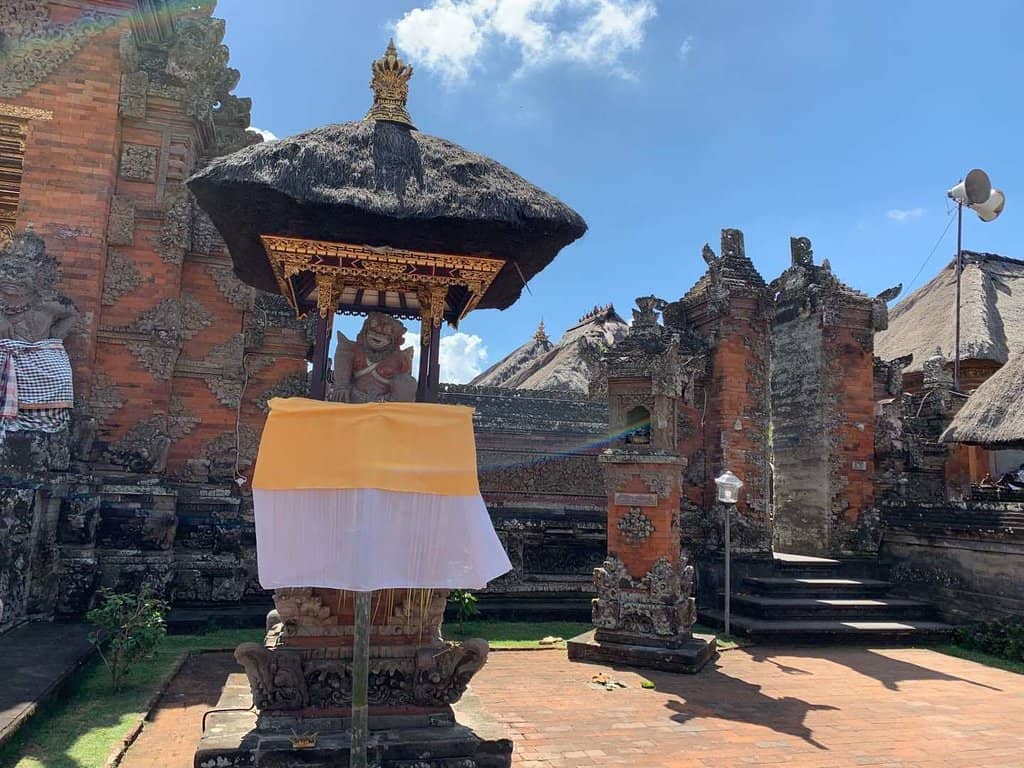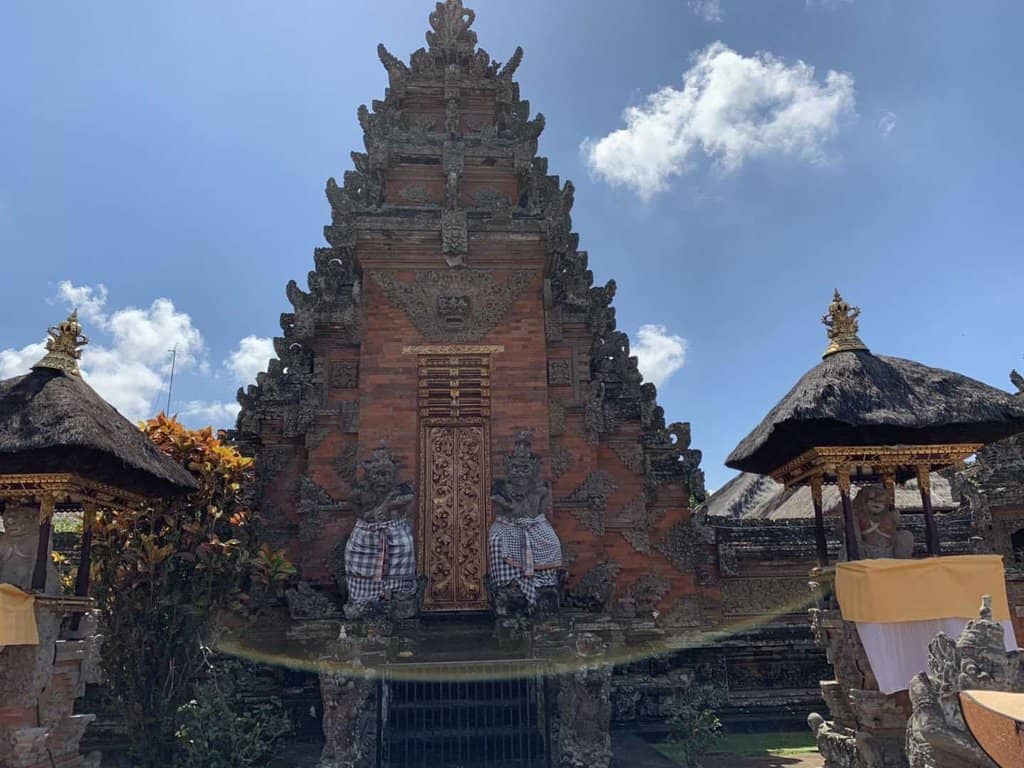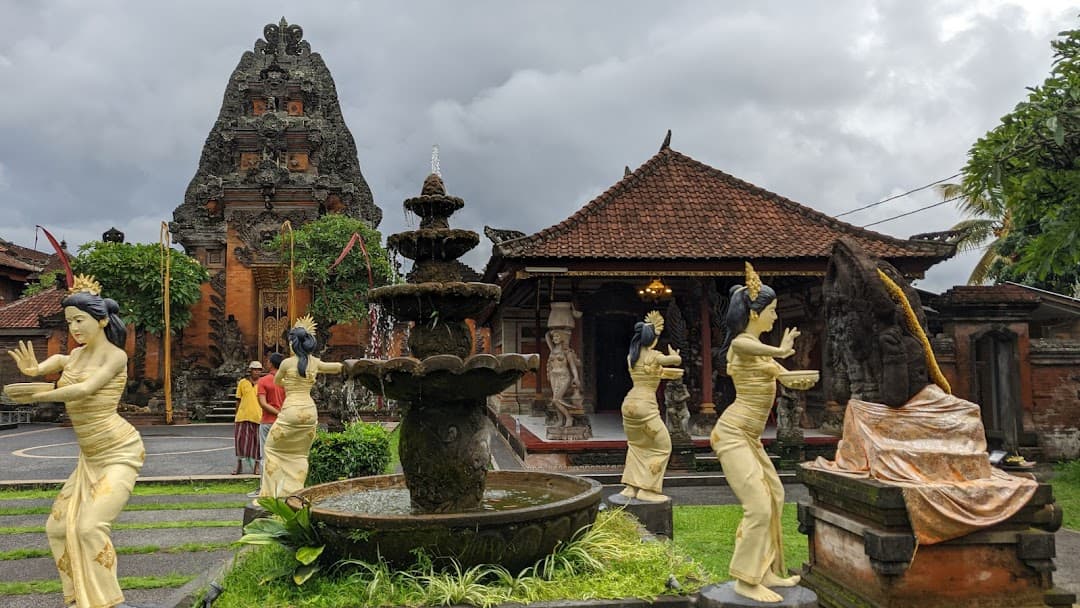
Pura Penataran Sasih (Moon of Pejeng)
Home to the colossal 'Moon of Pejeng' Bronze Age drum and ancient 10th-12th century statues.

Highlights
Must-see attractions

Social
From TikTok & Reddit
Best Time
Fewer crowds, cooler temperatures

Pura Penataran Sasih (Moon of Pejeng)
Best Time
Fewer crowds, cooler temperatures

Highlights
Must-see attractions
Home to the colossal 'Moon of Pejeng' Bronze Age drum and ancient 10th-12th century statues.
"A truly unique historical gem, featuring the world's largest Bronze Age kettle drum."

Sarong is a Must! :kimono:
Always wear a sarong to enter. They are often provided with admission or can be rented.
Entry Fee Varies :moneybag:
Be prepared for small entry fees, though they can differ. Keep small change handy.

Highlights
Discover the most iconic attractions and experiences

Moon of Pejeng Drum
Main temple area
Marvel at the world's largest Bronze Age kettle drum, an awe-inspiring ancient artifact.

Ancient Sculptures
Temple grounds
Discover 10th- to 12th-century statues of deities, offering a unique historical perspective.

Balinese Architecture
Temple complex
Admire the intricate details of traditional Balinese temple design and layout.
Plans like a pro.
Thinks like you
Planning Your Visit
The Moon of Pejeng Drum
Temple Etiquette & Entry
Best Times
Insider Tips
from TikTok, Instagram & Reddit
Sarong is a Must! :kimono:
Always wear a sarong to enter. They are often provided with admission or can be rented.
Entry Fee Varies :moneybag:
Be prepared for small entry fees, though they can differ. Keep small change handy.
Respectful Exploration :pray:
Wander respectfully. This is a local place of worship, not just a tourist site.
Learn the History :scroll:
Read the info provided by the keeper for fascinating insights into the drum and temple.
Tips
from all over the internet
Sarong is a Must! :kimono:
Always wear a sarong to enter. They are often provided with admission or can be rented.
Entry Fee Varies :moneybag:
Be prepared for small entry fees, though they can differ. Keep small change handy.
Respectful Exploration :pray:
Wander respectfully. This is a local place of worship, not just a tourist site.
Learn the History :scroll:
Read the info provided by the keeper for fascinating insights into the drum and temple.
What Travellers Say
Reviews Summary
Pura Penataran Sasih is a unique local temple, primarily known for housing the immense 'Moon of Pejeng' Bronze Age drum. Visitors appreciate the historical significance of the drum and the ancient statues, offering a glimpse into early Balinese culture. However, some find the site unassuming and note inconsistencies with entry fees and staff interactions.
"This is an unassuming but special local temple, as it is home to the largest extant bronze age kettle drum in the world, the Moon of Pejeng. These drums can be familiar to you if you have visited historical museums in mainland Southeast Asia, such as in Vietnam or Thailand, hosting Dong Son drums. This one is said to have been made locally in around 300 BC. The keeper at the entrance has a one page story and info on it in French, entrance was 20k. 2 minutes from the archeological museum. Oh and contrary to most Balinese temples, this is full of really old (9-14th century) sculptures of deities, although not in a great shape."
Gábor Parti
"Penataran Sasih Temple is located in Pejeng Village, you can access this temple by bus, car and motorbike. The facilities provided include a parking area and toilets. Inside the Penataran Sasih temple area we can see Balinese architecture, ancient statues, and also the moon as the icon of Penataran Sasih Temple. there we can pray, take pictures, and learn the history of the Penataran Sasih temple. in the area around the temple we can buy balinese food like babi guling, lawar and also tipat cantok. for opening hours from 8 am to 4 pm. to enter there, you don't have to pay for an entrance ticket, but you must wear a sarong."
27_IPutuBijakAdiPratama
"Nothing special here. There are some nicely carved wood alters. Paid 50 for admission and a sarong. There was nobody visiting the temple the entire time I was there."
Phillip Hockings
What People Like
What People Dislike
Frequently Asked Questions
🚇 🗺️ Getting There
Pura Penataran Sasih is located in Pejeng Village, a short drive from central Ubud. You can easily reach it by car, motorbike, or taxi. Some visitors mention it's close to the Archaeological Museum, making it a convenient stop.
While direct public transport might be limited, local buses can get you to Pejeng Village. From there, it's a short walk or a quick motorbike taxi ride to the temple.
Yes, there is a parking area available for visitors arriving by car or motorbike.
🎫 🎫 Tickets & Entry
Entry fees can vary. Some visitors report paying around 20,000 IDR or 2,000 IDR, while others mention no official fee but a donation. It's best to have small change ready.
Yes, wearing a sarong is mandatory for entering Balinese temples, including Pura Penataran Sasih. Sarongs are usually provided or can be rented at the entrance.
The temple is typically open from 8 AM to 4 PM, but it's always a good idea to confirm locally as hours can sometimes change.
There isn't usually a need to buy tickets in advance. Entry is typically handled at the temple entrance.
📸 📸 Photography
Photography is generally allowed within the temple grounds, but always be mindful and respectful, especially in areas where people are praying. Avoid intrusive photography.
The 'Moon of Pejeng' drum itself is a prime photo opportunity. The ancient statues and the traditional Balinese architecture also make for great shots.
🍽️ 🍽️ Food & Dining
Yes, the area around the temple, particularly in Pejeng Village, offers local Balinese food options. You can find dishes like 'babi guling' (suckling pig), 'lawar,' and 'tipat cantok'.
For Different Travelers
Tailored advice for your travel style
👨👩👧 Families with Kids
Keep in mind that the temple is a place of worship, so encourage children to explore respectfully. The site is relatively compact, making it manageable for younger children. Consider bringing snacks and water, as dining options directly at the temple are limited, though local eateries are nearby in Pejeng Village.
🏛️ History Buffs & Culture Enthusiasts
Take your time to absorb the atmosphere and read any available information. The temple's unassuming nature belies its historical importance. It's a chance to see a less commercialized piece of Balinese heritage and appreciate its enduring cultural significance.
🚶♀️ Solo Travelers
Be prepared for the entry fee and sarong requirement. Engaging with the temple keeper, if possible, can offer unique insights. It's a great opportunity to experience a local Balinese temple without the overwhelming crowds often found at more famous sites.
Deep Dives
In-depth insights and expert knowledge
The Enigmatic Moon of Pejeng
This drum is considered the largest extant example of its kind, making it a unique draw for history enthusiasts and curious travelers alike. Its sheer size and age are awe-inspiring, offering a tangible link to a distant past. The keeper's information, though brief, adds a layer of understanding to this remarkable artifact.
The sheer scale and preservation of the Moon of Pejeng are what truly captivate visitors, providing a moment of quiet contemplation about ancient craftsmanship and cultural heritage.
A Glimpse into Ancient Balinese Art
These statues offer a fascinating insight into the religious and artistic practices of Bali during the pre-Majapahit era. They represent a different artistic style compared to later periods, showcasing the evolution of Balinese sculpture. Exploring these ancient carvings provides a deeper appreciation for the temple's long history and its role as a spiritual center.
The collection of ancient deities provides a unique historical context, allowing visitors to connect with the spiritual heritage of the island beyond the more commonly known temples.
Navigating Entry and Etiquette
Crucially, wearing a sarong is mandatory for all visitors to respect the sanctity of the site. These are usually available for rent or included with the entrance fee. It's advisable to carry small denominations of Indonesian Rupiah for any fees or donations. Being polite and observant of local customs will ensure a smooth and respectful visit.
Some visitors have reported encountering less-than-friendly staff regarding payment, so a calm and understanding approach is recommended. The overall experience is enhanced by respecting the temple's traditions and its role as a place of worship for the local community.






Social
from TikTok, Instagram & Reddit